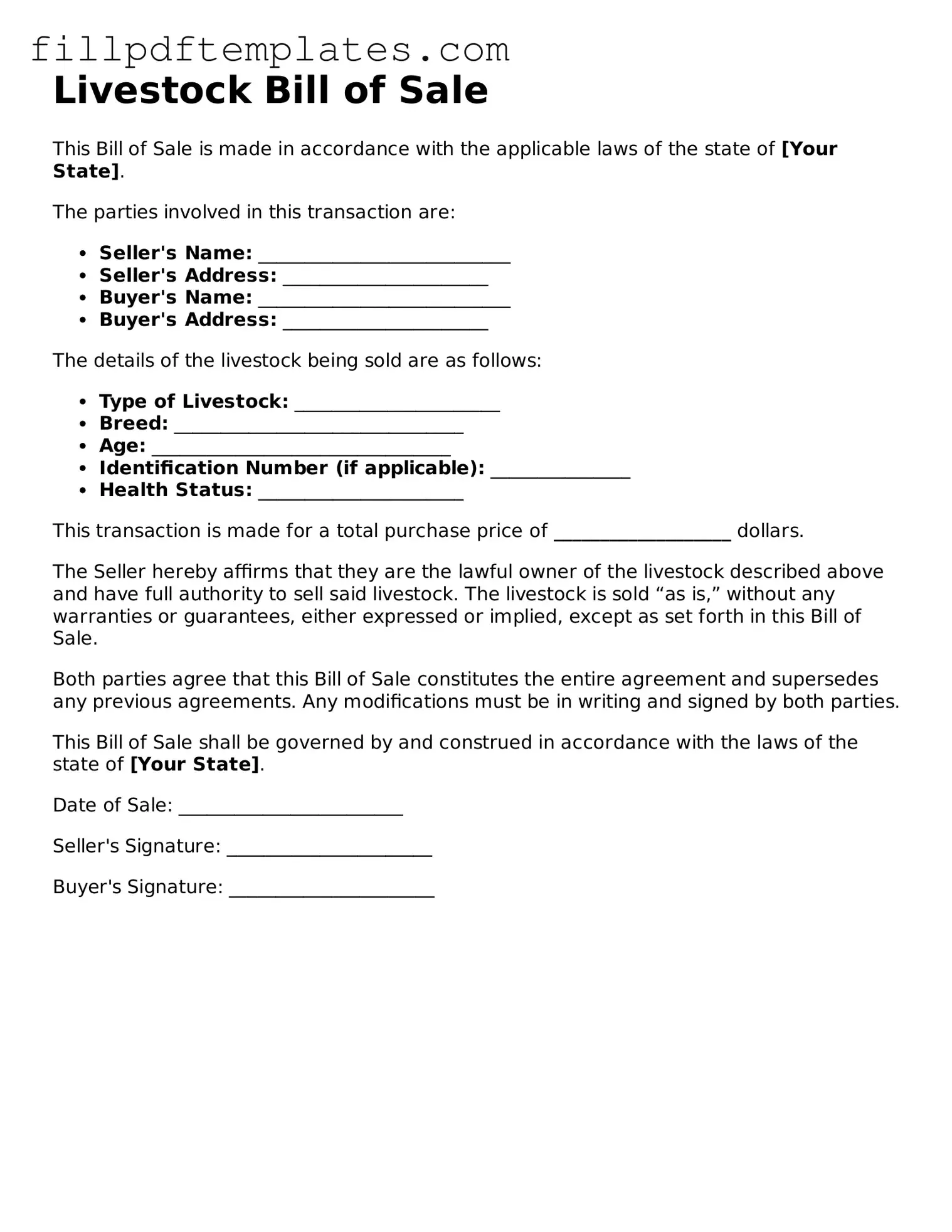Livestock Bill of Sale
This Bill of Sale is made in accordance with the applicable laws of the state of [Your State].
The parties involved in this transaction are:
- Seller's Name: ___________________________
- Seller's Address: ______________________
- Buyer's Name: ___________________________
- Buyer's Address: ______________________
The details of the livestock being sold are as follows:
- Type of Livestock: ______________________
- Breed: _______________________________
- Age: ________________________________
- Identification Number (if applicable): _______________
- Health Status: ______________________
This transaction is made for a total purchase price of ___________________ dollars.
The Seller hereby affirms that they are the lawful owner of the livestock described above and have full authority to sell said livestock. The livestock is sold “as is,” without any warranties or guarantees, either expressed or implied, except as set forth in this Bill of Sale.
Both parties agree that this Bill of Sale constitutes the entire agreement and supersedes any previous agreements. Any modifications must be in writing and signed by both parties.
This Bill of Sale shall be governed by and construed in accordance with the laws of the state of [Your State].
Date of Sale: ________________________
Seller's Signature: ______________________
Buyer's Signature: ______________________
